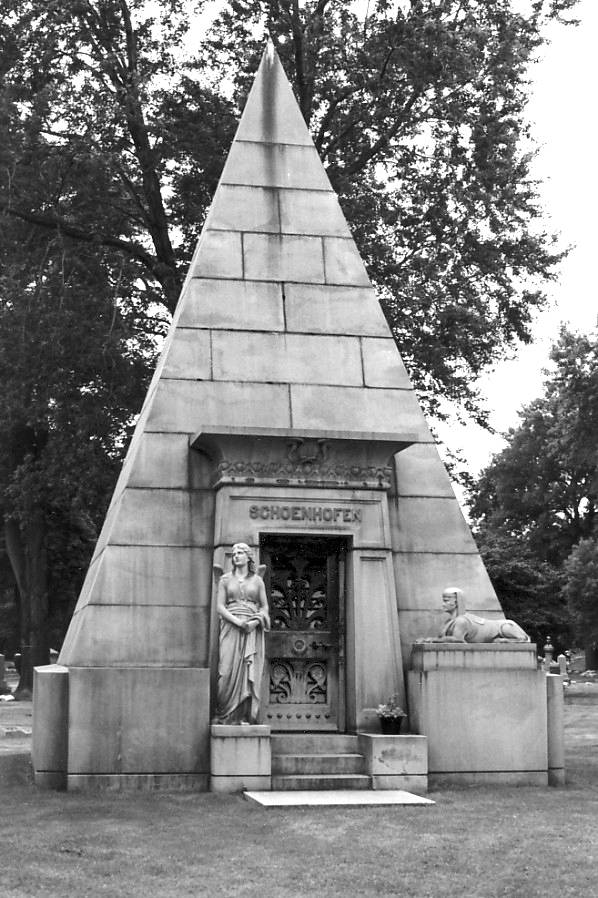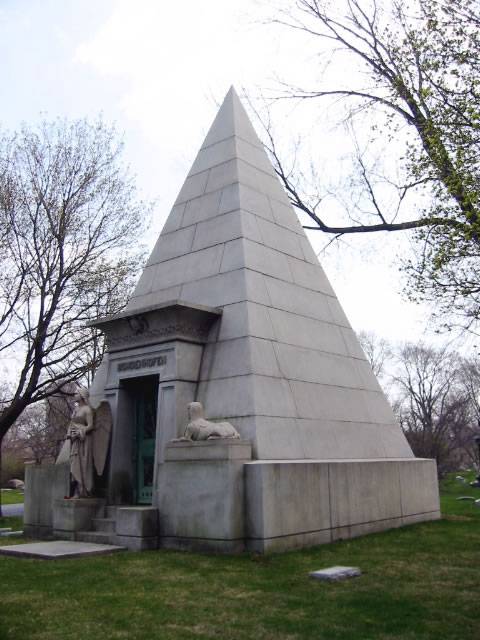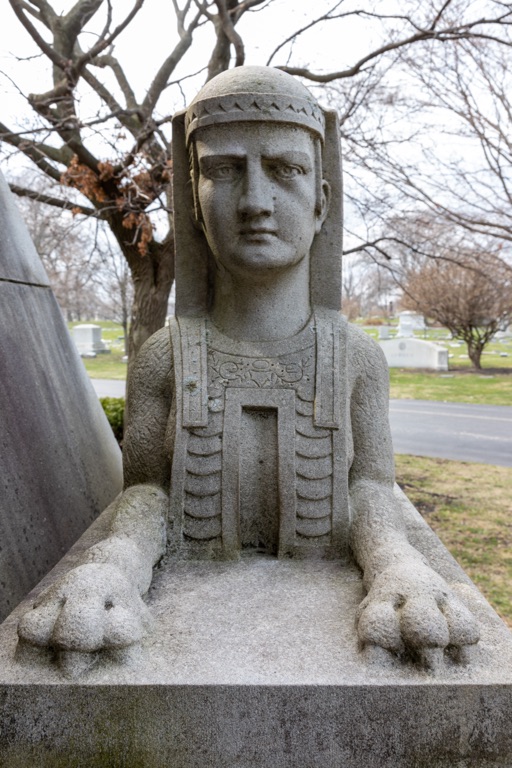The Schoenhofen Pyramid Mausoleum stands as a unique historical structure located in the Graceland Cemetery in Chicago, Illinois. It is a striking example of Egyptian Revival architecture, a style that gained popularity in the 19th century. The mausoleum was built in 1890 for the beer magnate Peter Schoenhofen. It is renowned for its pyramid shape and the lore surrounding its creation and purpose. The mausoleum is not only a testament to the architectural trends of its time but also serves as a symbol of the Schoenhofen family’s legacy.
Get your dose of History via Email
Historical Background of Schoenhofen Pyramid Mausoleum
The Schoenhofen Pyramid Mausoleum was built in 1890, designed by architect Richard E. Schmidt. It was created for Peter Schoenhofen, a prominent Chicago brewer. The mausoleum’s design reflects the Egyptian Revival style, which was fashionable among the elite of the time. This style was part of a larger trend that followed the fascination with ancient Egypt after the Napoleonic campaigns in the early 19th century.
Peter Schoenhofen was a key figure in Chicago’s brewing industry during the late 19th century. After his death in 1893, he was interred in the mausoleum that now bears his name. The structure has stood the test of time and remains an iconic feature of Graceland Cemetery. It has attracted attention for its unique design and the prestige of the Schoenhofen family.
Unlike many other mausoleums of the era, the Schoenhofen Pyramid Mausoleum does not have a history of habitation or significant events occurring within its walls. Its significance lies primarily in its architectural uniqueness and the status of the individual it commemorates. The mausoleum has been a point of interest for visitors to the cemetery for over a century.
The Schoenhofen Pyramid Mausoleum has not been the scene of any historically important events in the traditional sense. However, it has contributed to the cultural and architectural history of Chicago. Its presence in Graceland Cemetery adds to the rich tapestry of the city’s historical narrative, showcasing the diverse influences that have shaped Chicago’s identity.
The discovery of the mausoleum was not a singular event, as it was intentionally constructed as a final resting place for Peter Schoenhofen. Since its construction, it has been maintained as part of the Graceland Cemetery, ensuring its preservation for future generations to appreciate and study.

About Schoenhofen Pyramid Mausoleum
The Schoenhofen Pyramid Mausoleum is a testament to the Egyptian Revival style, characterized by its pyramid shape and the use of Egyptian motifs. The structure is made of limestone, which gives it a stately and enduring quality. The mausoleum’s entrance is marked by a pair of imposing bronze doors that feature intricate hieroglyphic designs, adding to its authenticity and grandeur.
One of the most striking features of the mausoleum is the winged sun disk that adorns the façade, a symbol often associated with divinity in ancient Egyptian culture. This emblem, along with other Egyptian-style ornamentation, reflects the period’s fascination with the ancient civilization and its artistic expressions.
The interior of the Schoenhofen Pyramid Mausoleum, though not open to the public, is said to be as meticulously designed as the exterior. The burial chamber is at the heart of the structure, where Peter Schoenhofen and his family members are interred. The choice of a pyramid shape for the mausoleum was likely influenced by the association of pyramids with eternity and the afterlife in Egyptian culture.
The construction methods and building materials used for the mausoleum were typical of the time, with a focus on durability and grandeur. The limestone used was a popular choice for monumental structures, ensuring that the mausoleum would stand as a lasting tribute to the Schoenhofen family.
The architectural highlights of the Schoenhofen Pyramid Mausoleum, such as the bronze doors and winged sun disk, have made it a point of architectural study and admiration. Its preservation allows for ongoing appreciation of the Egyptian Revival style and its place in the architectural history of the United States.

At a glance
Country: United States
Civilization: American (19th Century)
Age: Built in 1890 AD
Conclusion and Sources
Reputable sources used in the creation of this article include:

